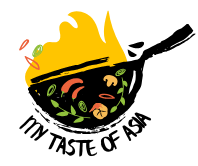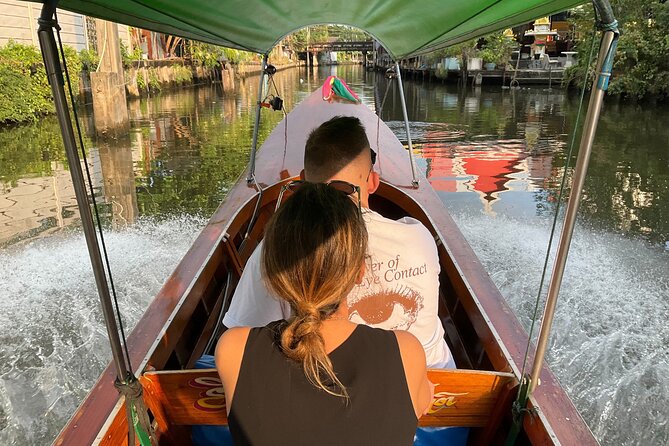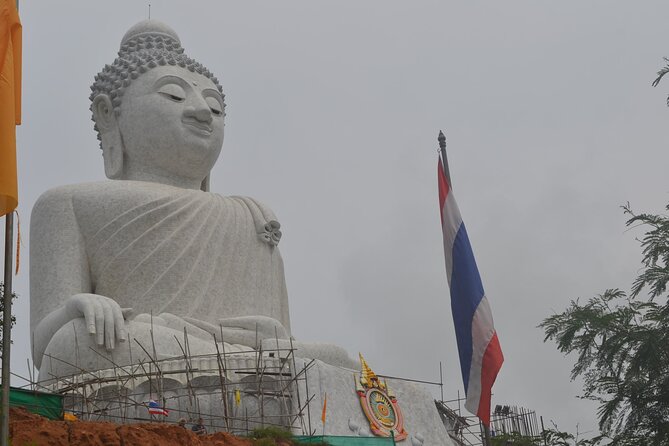In the bustling city of Kathmandu, food enthusiasts and travelers alike can enjoy the flavors and culinary traditions of Nepal through a Nepali Cooking Class.
This exciting and educational experience offers a glimpse into the vibrant Nepali cuisine and culture. With a focus on authentic recipes and traditional techniques, participants can learn to prepare a variety of dishes, from aromatic Dal soup to flavorful curries.
The class caters to dietary requirements and includes a delicious lunch. Conveniently located in the heart of Kathmandu, it promises a memorable culinary adventure.
Key Takeaways

- Nepali cuisine is shaped by the unique topography and geography of Nepal, incorporating ingredients like rice, lentils, and potatoes from the Himalayas.
- Nepali cuisine reflects the multicultural nature of Nepal, with dishes incorporating various spices and flavors.
- Food plays an important role in Nepali society and festivals, serving as a significant part of rituals and traditions.
- Nepali cuisine emphasizes the use of fresh, locally sourced ingredients and fosters social bonding and strengthens relationships.
History of Nepali Cuisine
In the Nepali Cooking Class in Kathmandu, the instructor frequently discusses the history of Nepali cuisine while teaching students how to prepare traditional dishes.
The history of Nepali cuisine is rich and diverse, influenced by various factors such as geography, climate, and cultural traditions.
Nepali cuisine has been shaped by the country’s unique topography, with the Himalayas providing a range of ingredients like rice, lentils, and potatoes.
The dishes often incorporate a variety of spices and flavors, reflecting the multicultural nature of Nepal.
The instructor not only explains the origins of different dishes but also explores the cultural significance behind them.
Students learn about the importance of food in Nepali society and the role it plays in festivals and celebrations.
Through these discussions, students gain a deeper understanding of Nepali cuisine and its connection to the country’s history and culture.
Traditional Nepali Ingredients

The instructor showcases traditional Nepali ingredients, explaining their significance and demonstrating how to incorporate them into various dishes.
Students gather around the instructor, eagerly watching as he holds up a small bowl of mustard oil. He explains that mustard oil is commonly used in Nepali cooking due to its unique flavor and health benefits.
Moving on to the next ingredient, the instructor introduces fenugreek seeds, highlighting their role in enhancing the taste of curries and pickles. He then proceeds to showcase turmeric, a vibrant yellow spice known for its anti-inflammatory properties.
As the class progresses, the instructor introduces other ingredients such as cumin, coriander, and cardamom, each with their own distinct flavors and uses in Nepali cuisine.
The students listen attentively, taking notes and asking questions, eager to learn how to recreate these traditional flavors in their own kitchens.
Step-by-Step Cooking Techniques

The instructor demonstrates step-by-step cooking techniques, showing students how to chop, sauté, and simmer their way to delicious Nepali dishes. Here are some key techniques covered in the class:
- Knife Skills: Students learn how to properly hold and use a knife to chop vegetables, herbs, and other ingredients with precision and efficiency.
- Sautéing: The instructor teaches the art of sautéing, which involves cooking ingredients in a small amount of oil or fat over medium-high heat. This technique helps to develop flavors and create a rich, caramelized finish.
- Simmering: Students learn the importance of simmering, a gentle cooking method that uses low heat to slowly cook ingredients in liquid. This technique helps to tenderize meats, blend flavors, and create hearty stews and soups.
- Seasoning: The class emphasizes the art of seasoning, teaching students how to use a variety of spices, herbs, and condiments to enhance the flavors of their dishes.
Authentic Nepali Recipes
.jpg)
During the cooking class, the instructor will teach students how to prepare authentic Nepali recipes using traditional ingredients and techniques. Students will have the opportunity to learn about the rich culinary heritage of Nepal and explore the flavors of this vibrant cuisine.
The class will focus on popular Nepali dishes such as Dal soup, mix vegetable, pickle, and Chicken or Mushroom. Traditional ingredients like rice, papad, and spinach will also be incorporated into the recipes. The instructor will guide students through each step of the cooking process, providing helpful tips and insights along the way.
Participants won’t only learn how to prepare these delicious dishes but also gain a deeper understanding of the cultural significance behind Nepali cuisine. By the end of the class, students will be able to recreate these authentic Nepali recipes in their own kitchens and impress their friends and family with their newfound culinary skills.
Cultural Significance of Nepali Food
.jpg)
Nepali cuisine holds a profound cultural significance, reflecting the country’s diverse heritage and traditions through its flavorful and aromatic dishes. The culinary traditions of Nepal are shaped by various ethnic groups and their distinct culinary practices. Here are four reasons why Nepali food is culturally significant:
- Celebration of diversity:
Nepali cuisine showcases the diversity of the country, with each region having its own specialties and cooking techniques. From Newari delicacies to Thakali cuisine, the food represents the rich tapestry of Nepali culture. - Rituals and traditions:
Food plays a significant role in Nepali rituals and traditions. From elaborate feasts during festivals like Dashain and Tihar to offerings made during religious ceremonies, food is an integral part of Nepali cultural celebrations. - Farm-to-table philosophy:
Nepali cuisine emphasizes the use of fresh, locally sourced ingredients. The reliance on organic farming practices and traditional cooking methods reflects the country’s deep connection to nature and its sustainable approach to food. - Social bonding:
Nepali food brings people together, fostering social connections and community spirit. Sharing a meal is seen as a way to strengthen relationships and build camaraderie.
Overall, Nepali cuisine not only satisfies the taste buds but also serves as a gateway to understanding the diverse cultural heritage of Nepal.
Tips and Tricks for Mastering Nepali Cooking
.jpg)
She’s excited to share her tips and tricks for mastering the art of cooking authentic Nepali dishes. As a renowned Nepali chef, she understands the importance of preserving the traditional flavors and techniques that make Nepali cuisine unique.
In her cooking class, she’ll guide participants through the process of creating delicious and aromatic dishes like Dal soup, mix vegetable, and Chicken or Mushroom curry. She’ll demonstrate the proper use of spices, the importance of balancing flavors, and the techniques for achieving the perfect texture and consistency.
Participants will also learn about the cultural significance of Nepali food and how it reflects the country’s history and traditions. Whether you’re a beginner or an experienced cook, this class will provide you with the knowledge and skills to master the art of Nepali cooking and impress your friends and family with authentic flavors.
Frequently Asked Questions
Is Transportation Provided From Hotels Outside of the Kathmandu Valley?
Yes, transportation is provided from hotels outside of the Kathmandu Valley. Guests can enjoy the convenience of hotel pickup and drop-off in a private vehicle as part of the cooking class experience.
Are There Any Restrictions on the Number of Participants in the Cooking Class?
The cooking class does not have any restrictions on the number of participants. It welcomes all individuals who are interested in learning Nepali cuisine, regardless of group size.
Can Children Under the Age of 8 Participate in the Cooking Class?
Children under 8 are not allowed to participate in the cooking class. The minimum age requirement is 8 years. This ensures a safe and enjoyable experience for all participants.
Is There a Minimum Number of Participants Required for the Cooking Class to Take Place?
There is no minimum number of participants required for the cooking class to take place. The class can cater to individuals or small groups, making it accessible for anyone interested in learning Nepali cooking.
Are There Any Additional Charges for Participants With Special Dietary Requirements?
Yes, there may be additional charges for participants with special dietary requirements. It is advised to inform the organizers at the time of booking to ensure they can cater to those needs effectively.
The Sum Up
To sum it up, participating in a Nepali Cooking Class in Kathmandu offers a unique and immersive experience in the vibrant flavors and culinary traditions of Nepal. Through hands-on cooking techniques and authentic recipes, participants can learn to prepare a variety of delicious Nepali dishes. The class also caters to dietary preferences, ensuring that everyone can enjoy the culinary journey. With the added convenience of hotel transfers and transportation, this cooking class promises a memorable and educational adventure in the heart of Kathmandu.
Moreover, if you’re interested in exploring other Asian culinary experiences, you can check out some of the following options:
- Khmer Cooking Class in Krong Siem Reap: Enjoy the traditional Khmer cooking techniques and ingredients while learning from a local chef in Krong Siem Reap, Cambodia.
- Japanese Cuisine Experience in Tokyo: Discover the art of making Temari sushi, a traditional Japanese delicacy, and delve into the flavors of Tokyo’s culinary scene.
- Hanoi Cooking Class and Market Tour: Join Chef Tien in Hanoi, Vietnam, to explore the vibrant local market and learn to cook traditional Vietnamese dishes.
- Traditional Balinese Cooking Class: Experience the warmth of a multi-generational Balinese family home while mastering the art of Balinese cooking.
By venturing into these different cooking classes, you can expand your culinary horizons and gain a deeper understanding of the diverse flavors and traditions across Asia.






